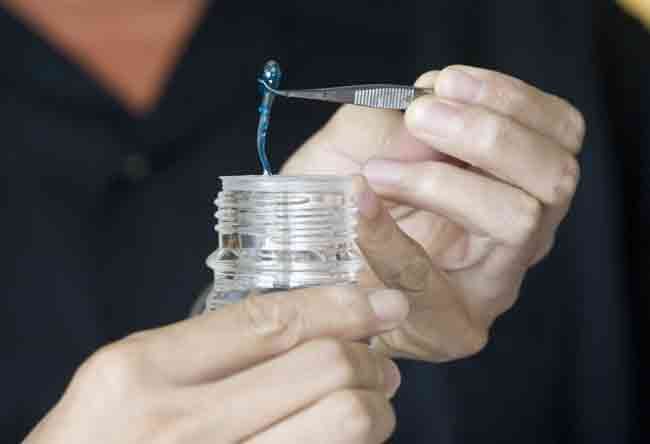How Sharks Hide Their Fingers

The genetic potential to create fingers and toes apparently existed ages before animals even crawled onto land, dating back to the distant common ancestors of sharks and humans, research now reveals.
The research focused on a group of genes that control how and where body parts develop in animals, including people. Scientists investigated the activity of these "Hox genes" in embryos of the spotted catshark.
Unexpectedly, they discovered that a spurt of genetic activity that helps digits such as fingers and toes develop in limbed animals was seen in shark embryos as well.
"Genetic processes were not simple in early aquatic vertebrates only to become more complex as the animals adapted to terrestrial living. They were complex from the outset," said developmental biologist Martin Cohn at the University of Florida at Gainesville.
So why don't sharks have fingers?
Although the genetic program needed to create digits might exist in sharks and many other kinds of fish, they only activate it briefly, said University of Florida graduate students Renata Freitas and Guangjun Zhang. In other words, people and other limbed vertebrates use this ancient recipe from their genetic cookbook and extend the cooking time.
Humans and other land animals ultimately descend from bony fish. Sharks, on the other hand, possess skeletons made of cartilage, not bone. This suggests the genetic potential for fingers and toes existed more than 500 million years ago, in the last common ancestor of bony and cartilaginous fish. This is more than 135 million years before digits debuted in the earliest limbed vertebrates, as amphibians struggled to adapt to land.
Sign up for the Live Science daily newsletter now
Get the world’s most fascinating discoveries delivered straight to your inbox.
These findings might not only shed light on the evolution of animals on Earth, but also could provide insights on ways to cure human birth defects, which affect about 150,000 infants annually in the United States. For instance, when a particular Hox gene is mutated in humans, "it results in malformations of fingers and toes," Cohn said.
In a parallel study, researchers at the University of Chicago found this genetic potential in paddlefish, a primitive living descendant of early fish with the first bony skeletons.
Cohn and his colleagues detailed their findings in the Aug. 15 issue of the journal PLoS ONE.
- Image Gallery: Great White Sharks
- Sharks Everywhere: Vote for Your Favorite
- Trivia: The Dirty Jobs of Sharks












